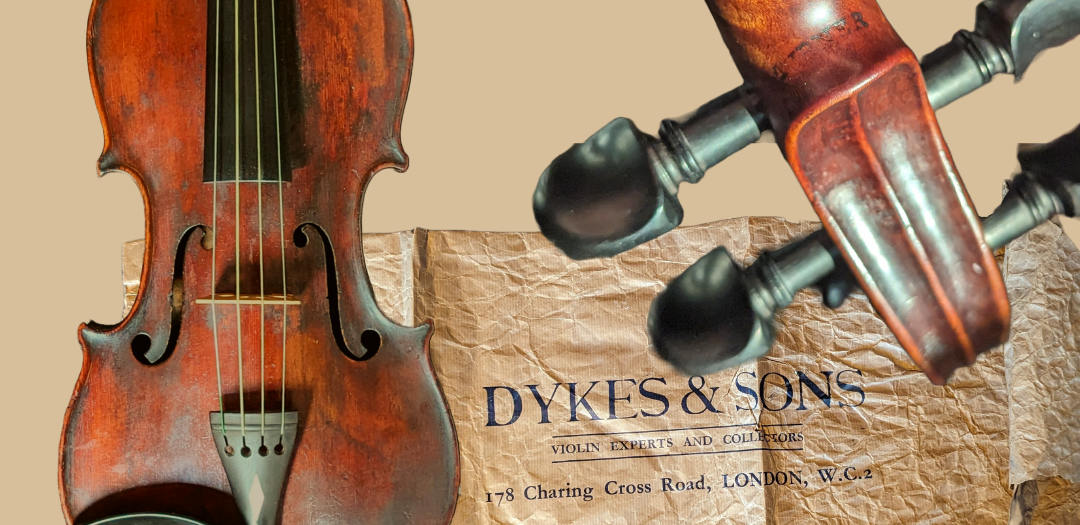John Turner of 84 Leadenhall Street, London and his son John Alvey Turner, who was established independently within the City of London at 19 Poultry by 1843, were musical instrument importers, wholesalers and music sellers. The earliest record found for John Turner of Leadenhall is 1835 when he advertised as a ‘Musical Instrument Seller’ a few doors away at 79 Leadenhall, although a later advertisement of John Alvey Turner in the Catholic Standard of 1861, after a move from the Poultry, mentions that they had been ‘established nearly half a century’. This might relate to an earlier family member, Thomas Turner, who advertised as a Music Seller on Snow Hill, near Smithfield Market in 1811. The last advert found for John Turner Sr is in 1851, still at the same address on Leadenhall Street. John Alvey Turner of the Poultry died on 2nd Feb 1862 and his Will notes a second residential address in Clapton. There is another John Alvey Turner who advertised as a Pianoforte maker back at Leadenhall Street in 1865, but giving the address of 1A, most probably a third generation.
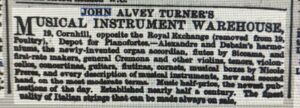
The Turners likely had some connection to John Frederick Lott II regarding the import of violins from Europe but it is unclear whether this was father or son or both. Lott certainly was involved in the cross channel trade in important Cremonese instruments, including later, the Betts Stradivarius of 1704. Such higher end instruments would have been sold by leading retailers, though the Turners were likely importers of a wide range of instruments to fill their warehouses. The Hills record a Bavarian Violin bearing his brand, J. Turner, London in their public records at the Ashmolean.
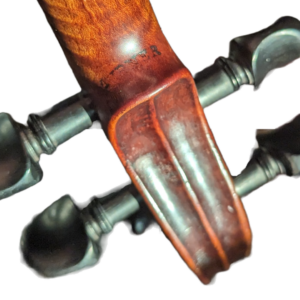
Confusion therefore reigns as there is no apparent association between the Turners in the City of London and John Turner of Waterloo Place, in St Mary, Newington in Southwark who sold imported violins circa 1840, often stamped falsely ‘Duke’ on the upper back. This begs the question; which John Turner was responsible for the violin for sale with Maple Violins stamped ‘Turner, London’ on the lower rib, ‘J. Turner’ on the original neck just below the pegbox and ‘Turner’ twice, unusually, under the bridge.
As there is no evidence that any of the above made instruments themselves, stylistic features from a certain hand cannot be relied upon, though the violin here was made in the Bavarian style, most probably in Mittenwald. The stamps are curiously placed, none of them obvious on initial inspection of the violin, though I have seen one other instrument with the same stamps but with an indecipherable mark on the upper back. Branding instruments with the maker or retailer’s name was a hangover from the second half of the 18th century, though continued on occasion by Betts and others in London, often more subtly such as in this example.
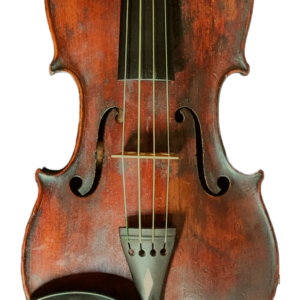
It is very difficult to be confident about which of the Turners is responsible for its import and sale, though I would tend towards John Turner of Waterloo Place. He was subtly a retailer as opposed to an importer himself, relying on others to both make and import. As such, he had little direct involvement other than sale and his position would have been precariously subject to others doing the same, perhaps explaining his lack of longevity within the business. If it was this John Turner, it is of a superior quality to the violins he sold stamped Duke. It was quite normal for retailers to sell instruments across a range of standards, priced accordingly. The Turners of the City advertised their addresses quite proudly as wholesalers and any instruments they sold under their own name, I would guess, would have been equally as proudly labelled.
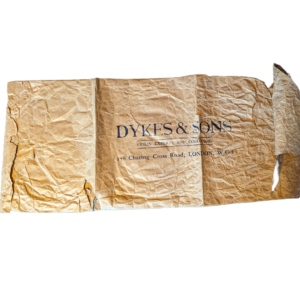
This instrument is somewhat of a time capsule. As well as the original neck, the tailpiece is contemporary to the period it was made, as are the boxwood pegs, now separate. The instrument evidently passed through the Leeds firm Dykes and Son after they moved to London, on New Bond Street and then Charing Cross Road where they remained until Arthur W. Dykes closed the business in 1950, with the paper bag in which it was sold, remarkably still with the instrument. It is a superb illustration of the Anglo Bavarian trade in musical instruments and an insight into the trade in musical instruments during the early to mid 19th century. It is currently set up with the original neck angle unaltered and with gut strings, an ideal partner for a baroque or transitional player.
Link to sale page listing https://mapleviolins.com/portfolio/john-turner-a-violin-london-circa-1840/


